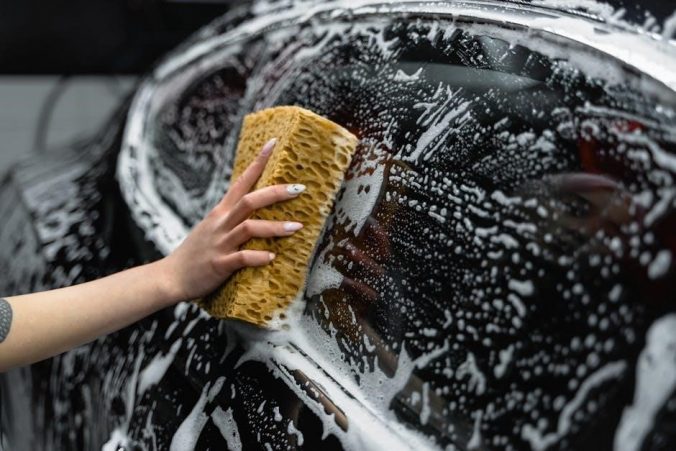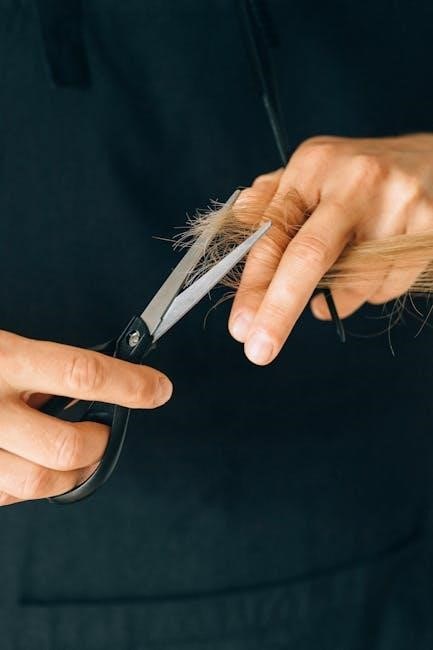Regular manual transmission oil changes are crucial for maintaining smooth gear shifts and preventing premature wear. This simple DIY process ensures optimal performance and extends gearbox life.
1.1 Importance of Regular Maintenance
Regular manual transmission oil changes are vital for preventing wear, overheating, and damage. Fresh fluid ensures smooth shifting, reduces friction, and extends gearbox life. Neglecting maintenance can lead to costly repairs and performance issues. Consistent upkeep is essential for maintaining optimal transmission function and reliability over time.
1.2 Brief Overview of the Process
A manual transmission oil change involves draining the old fluid, inspecting it for contaminants, and refilling with the correct type of transmission fluid. This straightforward process requires basic tools like a socket wrench and drain pan. Proper torque specifications must be followed when securing drain plugs. Regular fluid changes help maintain smooth shifting and prevent gearbox damage, ensuring long-term reliability and performance.
Tools and Materials Needed
Essential tools include a socket wrench, drain pan, and ratchet set. Materials needed are transmission fluid, new gasket (if required), and a fluid pump for easier refilling.
2.1 Essential Tools: Socket Wrench, Drain Pan, etc.
A socket wrench and ratchet set are vital for removing drain and filler plugs. A drain pan collects old fluid, while jack stands or ramps elevate the vehicle. A torque wrench ensures proper plug tightening. Additional tools may include a transmission fluid pump for refilling and a new gasket for the drain plug to prevent leaks.
2.2 Transmission Fluid: Types and Specifications
Manual transmissions require specific fluid types, such as Synchromesh or GL-3/GL-4 gear oils, depending on the vehicle. Always consult the owner’s manual for exact specifications. Using the wrong fluid can damage gears and bearings. Common choices include Valvoline Synchromesh, Toyota Gear Oil Spec.II GL-3 75W-90, or Mopar MS-9417 for certain models. Avoid using hypoid gear lube or engine oil, as they are unsuitable for manual transmissions.
Preparation Steps
Ensure the vehicle is securely lifted using jack stands, engage the parking brake, and gather essential tools. Check the owner’s manual for fluid specifications and quantities needed.
3.1 Jacking Up the Vehicle Safely
Safely lift the vehicle using a jack and support it with jack stands. Ensure the car is on level ground and the parking brake is engaged. Position the jack under the designated lift points to avoid damage. Double-check the stability before starting work underneath. Always refer to the owner’s manual for specific jacking locations and safety guidelines.
3.2 Locating the Transmission Filler and Drain Plugs
Identify the transmission filler and drain plugs by consulting your vehicle’s manual or repair guides. Their locations vary by make and model. Ensure you correctly distinguish between the filler plug (used for adding fluid) and the drain plug (for draining old fluid). Misidentifying them can lead to damage. Double-check their positions before proceeding to avoid errors.
Draining the Old Transmission Fluid
Position the vehicle on level ground, engage the parking brake, and locate the drain plug. Use a drain pan to catch the old fluid as it drains out. Allow the fluid to flow completely before proceeding with the next steps. Wear gloves and eyewear for safety, as the fluid may be hot. Draining the old fluid is essential for a clean oil change.
4.1 Step-by-Step Draining Process
Loosen the filler bolt with a wrench to relieve pressure. 2. Remove the drain plug and let the fluid flow into a drain pan. 3. Replace the drain plug gasket to prevent leaks. 4. Tighten the drain plug to the specified torque. 5. Clean the area around the drain plug to avoid contamination. Dispose of the used fluid responsibly following environmental guidelines.
4.2 Safety Tips for Handling Used Fluid
Always use a drain pan to catch old fluid and prevent spills. Wear gloves and goggles to protect against skin and eye irritation. Avoid breathing in fumes by working in a well-ventilated area. Never mix used transmission fluid with new fluid or other oils. Dispose of used fluid responsibly by taking it to a recycling center. Clean tools and surfaces immediately if spills occur.
Inspecting and Replacing the Drain Plug
Inspect the drain plug for damage or wear. Clean or replace it if necessary. Tighten it securely according to the manufacturer’s torque specifications to prevent leaks.
5.1 Examining the Old Fluid for Contaminants
After draining, inspect the old fluid for contaminants like metal shavings or debris. Check its color and consistency; dark or gritty fluid indicates wear. Compare it to new fluid for clarity. A magnetic drain plug may collect metal particles, signaling potential internal damage. If contaminants are found, further inspection or professional advice may be needed to address transmission health issues early.
5.2 Torque Specifications for Securing the Plug
Always consult your vehicle’s manual for specific torque specs when securing the drain plug. For most manual transmissions, the torque ranges between 25-50 Nm. Over-tightening can damage threads, while under-tightening may lead to leaks. Use a torque wrench for precision. For example, a BMW 5-speed transmission often requires 50 Nm. Ensure the plug is snug and even to prevent future issues.
Refilling with New Transmission Fluid
Refilling with new transmission fluid involves using a pump or pour method. Fill until fluid trickles from the filler hole. Consult your owner’s manual for the correct type and amount. Avoid overfilling to prevent damage.
6.1 Using a Transmission Fluid Pump
A transmission fluid pump simplifies refilling by preventing spills. Attach the pump to the fluid bottle, insert the hose into the filler hole, and squeeze or pressurize to fill. For pneumatic pumps, ensure the hose is primed before use. Fill slowly, checking the level frequently to avoid overfilling. This method is cleaner and more controlled compared to pouring directly from the bottle.
6.2 Checking the Fluid Level Properly
After refilling, ensure the vehicle is on level ground and the transmission is warm. Locate the filler plug or dipstick, typically found near the gearshift or underside. Wipe it clean, insert, and check the level against the manufacturer’s marks; Add fluid cautiously to avoid overfilling. Refer to your owner’s manual for specific guidance on proper fluid levels and type recommendations.
Post-Maintenance Checks
After changing the transmission fluid, inspect for leaks, clean tools, and dispose of used fluid responsibly. Lower the vehicle and test drive to ensure smooth operation.
7.1 Cleaning Up Spills and Tools
After completing the fluid change, thoroughly clean any spilled transmission fluid using rags and a solvent. Wipe down tools and store them properly. Dispose of used rags responsibly to prevent environmental contamination. Ensure the work area is clear to avoid slipping hazards and maintain a safe environment. Proper cleanup ensures no residue affects future maintenance tasks.
7.2 Lowering the Vehicle and Testing
Once the fluid change is complete, carefully lower the vehicle using a jack stand or ramps. Test the transmission by driving gently and checking for leaks. Ensure smooth shifting and proper fluid level. Refer to your manual for specific torque specs for the drain plug. Proper testing confirms the success of the maintenance and ensures reliable performance.
Disposal of Used Fluid
Properly dispose of used transmission fluid to protect the environment. Recycle it through authorized centers to ensure eco-friendly handling and compliance with regulations.
8.1 Environmental Considerations
Proper disposal of used transmission fluid is essential to prevent environmental contamination. Always recycle through authorized facilities to avoid harming ecosystems and water sources. Improper disposal can lead to soil and water pollution, damaging wildlife and natural habitats. Adhere to local regulations and use designated recycling centers to ensure eco-friendly handling of hazardous materials.
8.2 Proper Recycling Methods
Recycle used transmission fluid responsibly by taking it to authorized auto repair shops or recycling centers. Many service stations accept used fluids for proper disposal. Ensure containers are leak-proof and clearly labeled. Check local regulations for specific guidelines. Never dispose of transmission fluid in household trash or drains, as it harms the environment. Proper recycling helps conserve resources and reduces pollution.
Common Mistakes to Avoid
Avoid using incorrect fluid types, overfilling, or underfilling the transmission. Always follow the manufacturer’s torque specifications and avoid skipping crucial steps like inspecting the drain plug.
9.1 Using Incorrect Fluid Types
Using incorrect fluid types can damage your manual transmission. Always use the fluid specified in your owner’s manual. For example, Toyota manuals require GL-3 75W-90, while Porsche may need specific synthetic oils. Wrong fluids can cause gear wear and seal failure. Check your manual for exact specifications to ensure compatibility and optimal performance.
9.2 Overfilling or Underfilling the Transmission
Overfilling or underfilling the transmission can lead to serious issues. Overfilling may cause fluid to leak onto components, damaging seals, while underfilling can result in inadequate lubrication and gear wear. Always use the dipstick or filler plug to check levels accurately. Refer to your owner’s manual for correct fluid capacity to avoid these common mistakes and ensure proper transmission function.
Frequently Asked Questions
Regular manual transmission fluid changes are essential for smooth operation. Typically, fluid should be changed every 30,000 to 60,000 miles, depending on usage and manufacturer recommendations.
10.1 How Often Should Fluid Be Changed?
Manual transmission fluid should typically be changed every 30,000 to 60,000 miles, depending on driving conditions and manufacturer recommendations. Synthetic fluids may last longer, while conventional fluids require more frequent changes. Always consult your owner’s manual for specific guidelines tailored to your vehicle, and adjust based on driving habits and fluid type.
10.2 Differences Between Manual and Automatic Fluids
Manual and automatic transmission fluids differ in formulation and purpose. Manual fluids are designed for higher friction and wear resistance, while automatic fluids (ATF) focus on smooth torque converter operation. Manual fluids often have higher viscosity and specific additives for synchromesh systems, whereas ATF is thinner and includes friction modifiers for clutch packs. Always use the fluid type specified by your vehicle’s manufacturer to avoid damage.
Model-Specific Tips
Popular models like BMW, Toyota, and Jeep often require specific transmission fluids. Always consult your vehicle’s manual for exact fluid type and capacity recommendations to ensure compatibility and performance.
11.1 Recommendations for Popular Models (e.g., BMW, Toyota, Jeep)
For BMW manual transmissions, use synthetic 75W-90 gear oil. Toyota models like the Corolla require GL-3 75W-90 fluid. Jeep Wrangler NSG-370 transmissions benefit from Valvoline Synchromesh. Always refer to your owner’s manual for specific fluid recommendations to ensure compatibility and optimal performance. Using the wrong fluid can lead to poor shifting and reduced transmission life, so double-check specifications before refilling.
11.2 Variations in Fluid Capacity and Type
Fluid capacity and type vary significantly across models. BMW transmissions often require 2-4 quarts of 75W-90 synthetic gear oil, while Toyota models may need 1.7-2.5 quarts of GL-3 or ATF D-II. Jeep Wrangler NSG-370 transmissions typically use 3.5 quarts of Mopar MS-9417. Always verify your owner’s manual for exact specifications to ensure proper lubrication and avoid damage from incorrect fluid types or volumes.
Regular manual transmission fluid changes ensure smooth shifting, prevent overheating, and extend gearbox life. DIY maintenance is cost-effective and straightforward, keeping your vehicle running efficiently for years.
12.1 Benefits of Regular Transmission Maintenance
Regular manual transmission oil changes offer numerous benefits, including enhanced gear performance, reduced friction, and extended component lifespan. Fresh fluid prevents overheating, ensuring smooth operation and protecting against costly repairs. Maintaining proper fluid levels and quality is essential for optimal performance and longevity of your manual transmission system.
12.2 Encouragement to Perform DIY Changes
Performing a manual transmission oil change yourself is a cost-effective way to maintain your vehicle. With basic tools and the right fluid, you can ensure the job is done correctly. DIY maintenance fosters a deeper connection with your car and saves money. Regular fluid changes prevent wear and tear, ensuring smooth operation and extending transmission life.















